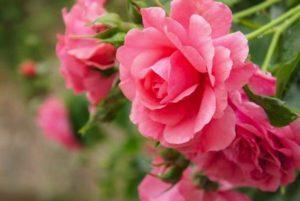Description of polyanthus varieties of roses, care and cultivation from seeds and cuttings
Polyanthus rose, most often, is chosen because of the luxurious flowering brushes. They are very similar to climbing varieties. Due to their high decorative qualities, they look spectacular in the garden, both in solo performance and in composition. It is not for nothing that they are called multi-flowered - polyanthus, on one plant there are over 40 large inflorescences. To grow gorgeous roses on your site, you need to know their strengths and weaknesses, planting and care features.
What is a polyanthus rose?
The name itself fully characterizes this flowering shrub - polyanthus rose, which stands out for its compact size, its height is 40-60 centimeters. The leaf mass is quite thick, the flowers are bright small (3-4 centimeters in diameter), collected in corymbose inflorescences. Their color is predominantly red or pink, but white specimens are also found.
For the successful cultivation of a polyanthus rose, it is very important that in the first year after planting, the plant devotes all its energy to the growth and development of roots and shoots. Therefore, after planting, young plants need special attention.
Features:
Polyanthus roses have a long flowering period. They delight with their luxurious inflorescences for almost the entire season. The bushes do not take up much space on the site, they look beautiful and are not afraid of temperature changes. The multi-flowered plant belongs to the creeping variety. Moisture resistance is another feature of the polyanthus rose.
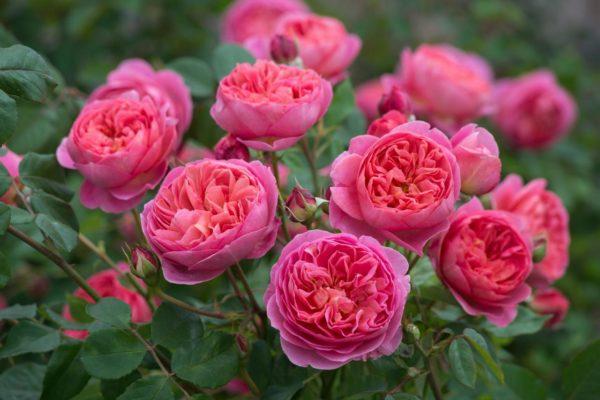
Benefits
Experienced gardeners distinguish among the positive characteristics of the polyanthus rose:
- not exactingness to growing conditions;
- resistance to adverse environmental factors;
- high decorative qualities;
- short stature;
- multi-floweredness;
- long flowering;
- lack of thorns;
- increased frost resistance;
- high vitality;
- a large number of shoots;
- the ability to bloom in the shade;
- increased immunity to fungal infections and major diseases;
- suitable for beginner gardeners.

disadvantages
Despite the whole list of advantages, the polyanthus rose has its own weaknesses, which you should be aware of:
- small assortment of colors;
- the need to remove faded buds;
- weak fragrance.
It is noteworthy that there are varieties of polyanthus roses with a rather unusual color (salmon, white-pink and violet-purple), but not with yellow buds.
Necessary conditions for growing
One of the significant factors affecting the popularity of the polyanthus rose is unpretentiousness both to the place of planting and to care. She is able to form luxurious inflorescences both in the shade and in a well-lit meadow. In order to initially create favorable conditions for growth, it is necessary to know which soil composition is more suitable for it, and which terrain is better for it.

Seat selection
For a polyanthus rose, a glade with a good level of illumination is preferable. The bushes should not be affected by cold air currents - drafts and northern winds. A shady area for planting polyanthus rose bushes can also be considered, but there is a high probability of stretching out shoots.
Required soil composition
For rose bushes, the best option would be to plant in light loamy soil, where there is a sufficient level of moisture and air permeability. Landing in sandy soil is not desirable, since in such places the roots of the plant can freeze, and in summer they overheat. In addition, useful components are quickly washed out of such soils. Chalk soils are bad for rose bushes.

A multi-flowered plant is capable of growing and developing on acidified soils, but it is desirable that the selected area for planting bushes be with a neutral degree of acidity.
Lighting and temperature
Polyanthus roses attract gardening enthusiasts for their cold resistance, they can be grown even in central Russia, in Siberia. The area for planting seedlings should be well lit, the light should be diffused.
For reliability for the winter, polyanthus roses, especially young ones, are recommended to be covered.
Humidity
When deciding on the terrain, you should not consider areas with high levels of humidity. On swampy grounds, the rose garden will often hurt. Lowlands are also of little use for such plants.
Rose sowing algorithm
To grow a plant while preserving all the qualities of the parent bush, you need to familiarize yourself in more detail with the main points of sowing.

Seed collection
It is recommended to engage in the selection of seed in August, when most of the buds have already faded. They choose not quite ripe seed pods for these purposes, carefully open the skin so as not to damage the seeds. They are poured onto a suitable surface and separated from the remaining pulp. For sowing, only strong specimens are used, which are disinfected in a solution of potassium permanganate of low concentration.
Stratification
An artificial version of the interlayering of seeds involves the following actions:
- Soak a tissue in hydrogen peroxide.
- Place the seed on it.
- Cover it with another layer of napkin.
- The seeds, wrapped in cloth, are placed in a plastic bag.
- Sign up.
- Place the interlayer in the refrigerator where vegetables are stored.
- Periodically, the seeds are taken out and examined.

If moldy seeds are found, they should be replaced with new ones. The first shoots can be observed already 2 months after the beginning of stratification.
Sowing preparation
Before laying the seeds, it is necessary to prepare both the container and the substrate. It is best to use cassette options for seedlings or wide containers (containers), peat tablets, personal cups. When sowing in a common container, the sprouts should be dived in the future, which is not quite suitable for the delicate roots of roses.
A universal soil for seedlings is used as a soil substrate, which can be purchased at any specialized outlet.
Timing and technology of sowing seeds
Given the tightness of the seed, work should be started early - in January-February. The algorithm for planting seeds in the ground provides for:
- Filling the container with universal seedling soil.
- Formation of wells in a common container at a distance of 3 centimeters from each other.
- Deepening seeds to a depth of 0.5 centimeters.
- Sprinkling them with loose soil, perlite.
- Humidification with a spray bottle.
- Creation of a mini-greenhouse due to a transparent cover, polyethylene.

Crops periodically need to be ventilated, condensate removed and irrigated. The first sprouts of the polyanthus rose will be in a month, when they are cramped, they are determined in separate cups. The shelter is removed after pecking them.
Planting culture by cuttings
The grafting method is quite effective and within the power of beginners. It is necessary to cut cuttings 15 centimeters long and soak in a growth stimulant solution for a day. After that, they are determined in a container filled with a soil mixture of peat, perlite, sand and sawdust that has been disinfected. They are also covered with plastic cut containers to create a greenhouse environment.

After 2-3 weeks, the cuttings of the polyanthus rose will have roots. The shelter is removed and transplanted into deeper containers. You can feed polyanthus roses with complex fertilizer. They are planted in the designated place in the garden the next year.
Polyanthus rose care
Caring for the bushes is not so difficult, the main thing is to irrigate in a timely manner, apply food, cut and cover for the winter.
Mulching
To retain moisture and protect against overheating, the soil under polyanthus roses must be mulched. Needles, straw or sawdust are used for these purposes.
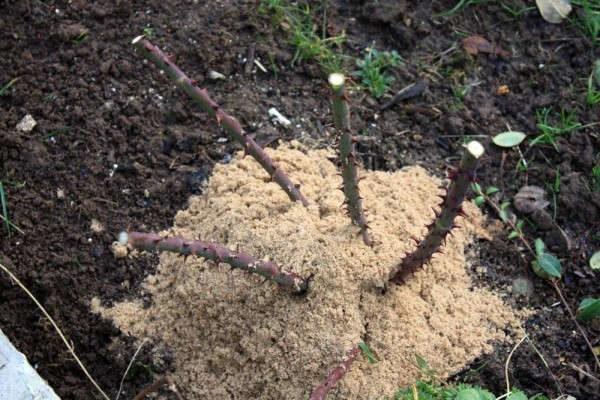
Irrigation
In the dry season, irrigation should be done every 2-3 days. Water must be poured at the root. In cold weather, watering must be avoided.
Top dressing
Any complex fertilizer for roses is suitable for surface treatment. Top dressing on a leaf does not take much time and effort, but the result from their use is simply excellent: the buds grow large and bright in color. In addition, there is no danger of spoiling the soil with mineral compounds under polyanthus roses.
And rotted manure or humus is used under the root.
The working solution is prepared at the rate of 1 part of organic fertilizer and 20 parts of pure water. Positive results are obtained by mulching the soil under the bushes with humus, where 1 bucket of funds is spent per 1 square meter.
Formative pruning
The procedure is carried out at the flowering stage, removing already faded inflorescences. In the fall, you need to shorten all the shoots by ½ so that it is more convenient to cover them for the winter. With the arrival of spring, shoots that have been exposed to frostbite or diseases are cut off. Darkened areas are excised down to healthy tissue.
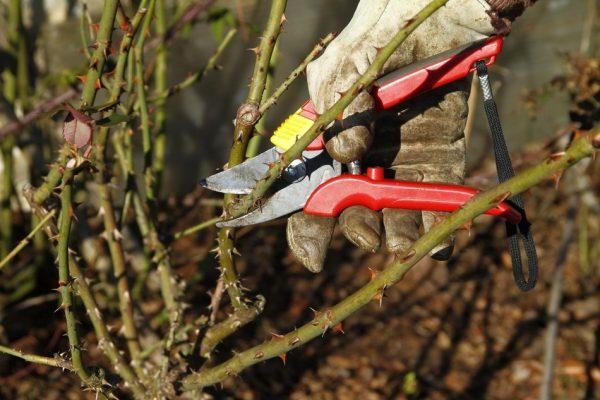
Shelter bushes for the winter
First, the shoots are shortened by half, the root collar is sprinkled with soil to a height of 30 centimeters. When grown in the northern regions, fallen leaves, straw, non-woven material are used to shelter bushes. When warm weather sets in in spring, the shelter from polyanthus roses is removed, and the root collar is freed from the ground after the threat of night frosts has passed.
The best varieties
Among the most popular and well-proven varieties of polyanthus rose, plant growing enthusiasts note: Orange Triumph, Masquerade, Iceberg, Angel Wings, Spartak.

Orange Triumph
This variety of polyanthus rose has an intensive growth rate, its height is 60-90 centimeters. The bush forms luxurious double flowers 3-5 centimeters in diameter, which are collected in chic brushes, green leaf plates with a glossy surface. There are almost 60 petals in one flower, their color is salmon red with an orange sheen. The rose looks quite elegant, up to 50 roses open at the same time on one shoot.
Masquerade
The bush stands out for its tallness and resistance to major ailments. The height of the plant does not exceed 70 centimeters, the color of the leaf mass is dark green. Roses are formed in large sizes, they are loose and with a pleasant scent. In one inflorescence up to 5 pieces are formed. The flowering of the polyanthus rose is long and plentiful, the color is first yellow, and then pale crimson.

Iceberg
The plant belongs to the bush type, its height is 60-80 centimeters, the flowers are 5-7 centimeters in diameter. Polyanthus rose attracts attention with its snow-white flowers, which last for a long time, both on the bush and in the cut. Shoots are erect, on light green leaf plates with a glossy surface. The variety differs in multiple flowering, from July to September.
Angel wings
The bush (30 centimeters in height) has a neat appearance, its flowers reach 5-6 centimeters in diameter, they are painted in a light pink color. There are several varieties: non-double, where the number of petals in flowers is 10-15 pieces, and terry - up to 25 pieces. One brush can contain up to 15 highly fragrant roses. Flowering is almost continuous, until the onset of cold weather.
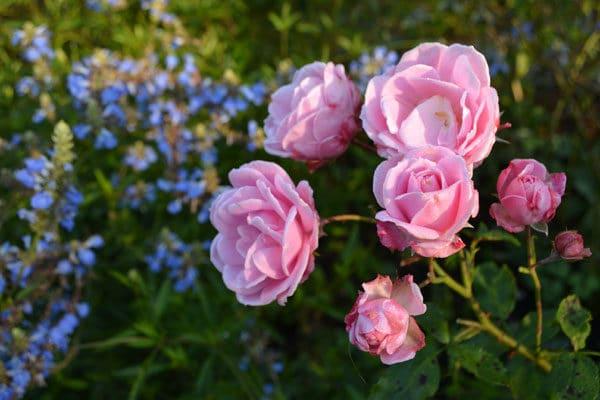
The Angel Wings rose variety can be bred both by seed and by cuttings. They choose it mainly for creating effective group compositions. They look especially advantageous when planting on lawns, along roadsides, sidewalks. Due to its high decorative characteristics, the plant fits perfectly into the design of terraces, balconies and verandas.
Spartacus
Polyanthus rose belongs to tall plants, its height is almost 80 centimeters. A distinctive feature of the Spartak variety is its very large flowers, which also stand out for their beautiful shape and red color. There are specimens with orange buds, which makes the bush even more spectacular.

Polyanthus rose is, in truth, a luxurious and graceful plant. The bushes are actively used in landscape design, they can be planted as individual garden decorations, or in combination with other flower crops, they look especially harmonious with ears of grasses. The main thing is to adhere to correct agricultural techniques when growing rose bushes and not to ignore methods of protection from low temperatures.
